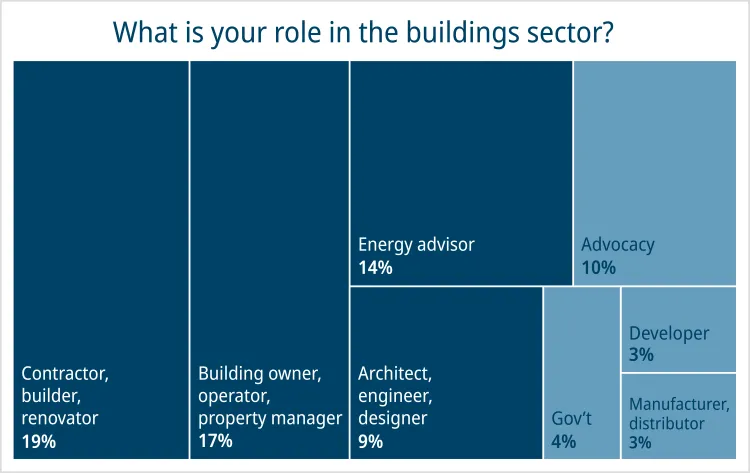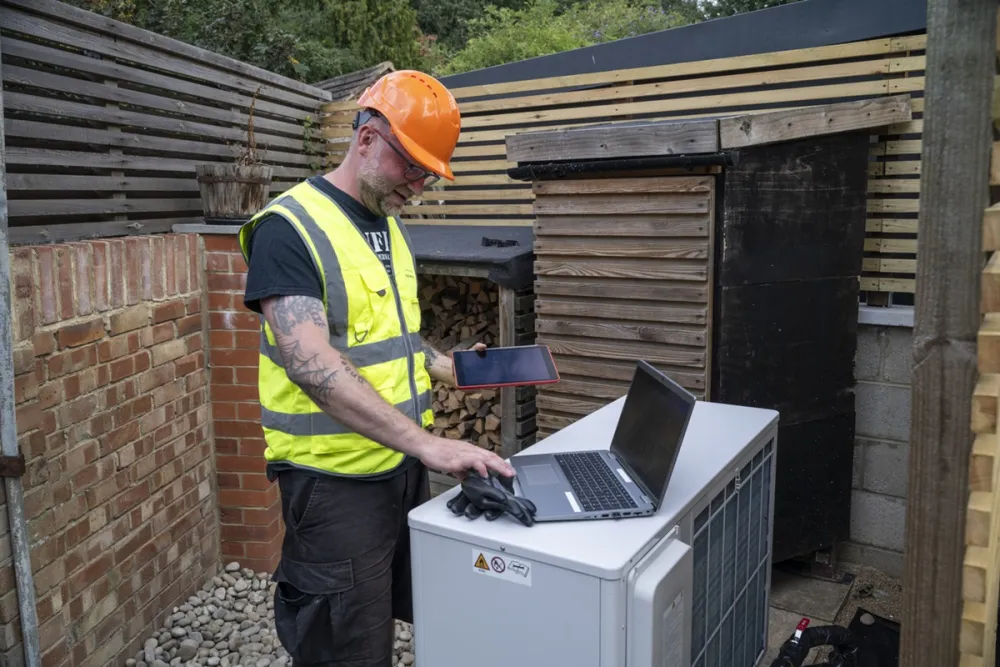British Columbia has long been considered a leader in building efficiency and decarbonization policy through the development of the B.C. Energy Step Code and more recently with the Zero Carbon Step Code. B.C.’s building code has served as an example for other jurisdictions looking to improve building quality while lowering emissions. But we have found through a recent industry survey and targeted interviews that this leadership hasn’t fully extended to existing buildings.
All British Columbians have the right to an affordable, low-emissions, and climate-safe home, which includes both new homes and those already in place. Interviews and surveys with members of various organizations in the B.C. building electrification sector show that the industry requires predictable market conditions, which can be achieved through clear and consistent policies, for this vision to become a reality.

Thanks to advancing building codes and industry leadership, emissions at the building-level have been declining but, on the whole, they have been increasing. This reflects the need to shift how we address existing buildings. One of the challenges identified in our interviews and survey, which have a significant impact on existing-building emissions levels, are the barriers to electrification.
While funding for heat pump rebates will remain available over the next two years, the lack of clear and consistent building retrofit and decarbonization policy is preventing the scale and pace of work needed to meet our goals. Our survey respondents shared a broad range of challenges they are experiencing, confirming the diverse and segmented nature of the building and retrofit industry. Some of these challenges included:
- Uncertainty around resources and incentives leading to contractors being unable to make long-term investments and asset management plans.
- Lack of clarity on retrofit rebate pathway options and program goals.
- Local government understaffing and inadequate training leading to permit and electrical capacity request delays.
“There is a big policy gap that needs to be addressed. Long-term funding is needed to stabilize this rebate stream so builders can learn they can depend on it.”
– Energy advisor, Vancouver Island
To meet B.C.’s emissions reduction targets, advance building electrification, and ensure all homes in the province are climate-safe, the provincial government should take action to chart a clearer path forward. This starts with sticking to the CleanBC commitments to ensure market and industry stability. Large policy and regulatory swings — both forward and backwards — results in significant challenges to industry and will lead to lost time and money for both businesses and building owners and managers. B.C. also needs an energy plan, one that lays out energy pathways and efficiency measures, and includes building retrofit targets.
“Government is most effective when setting mandatory policies and standards.”
– Building designer and architect, North Coast
As Canada looks to build a new energy future, one grounded in clean electricity and economic innovation, there is still an opportunity for B.C. to set the pace for national action on low-carbon and climate-resilient buildings. To do so, intention must be set with long-term, consistent resourcing and targets that create a runway for the market to respond. In a time of ever-increasing severe weather events and cost of living challenges, advancing building electrification and deep retrofits presents an opportunity to create jobs, protect building occupants, and reduce energy costs and greenhouse gas emissions. Now is the time for B.C. to lead the way.












